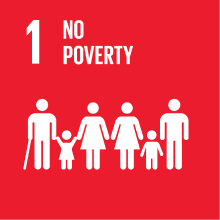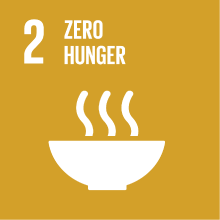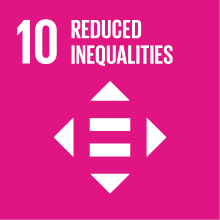ETHNOLINGUISTICS (ADVANCED COURSE)
- Academic year
- 2025/2026 Syllabus of previous years
- Official course title
- ETNOLINGUISTICA SP.
- Course code
- FM0074 (AF:582602 AR:326310)
- Teaching language
- Italian
- Modality
- On campus classes
- ECTS credits
- 6
- Degree level
- Master's Degree Programme (DM270)
- Academic Discipline
- L-LIN/01
- Period
- 1st Semester
- Course year
- 2
- Where
- VENEZIA
Contribution of the course to the overall degree programme goals
Expected learning outcomes
Pre-requirements
Contents
Referral texts
G. R. Cardona, Introduzione all’etnolinguistica, Novara, 2006 (sections 3.1.1, 3.2.2, 3.2.3, 4.1, 4.2, 4.3, 4.4, 4.5, 4.6, 5.1, 5.2, 5.3, 7.4, 8.2, 8.3, 8.5).
M. Mancini, B. Turchetta (eds.), Etnografia della scrittura, Roma, 2014 (chapters 2, 6, and 7).
2. Further readings
2.1. Language and culture
F. Boas, Handbook of American Indian Languages, I, Washington, 1911, pp. 5-83.
E. Sapir, The Status of Linguistics as a Science, in «Language» 5, 1929, pp. 207-214.
B. Malinowski, Coral Gardens and their Magic, II, London, 1935, pp. 3-74.
B. L. Whorf, The relation of habitual thought and behavior to language, in Language, Culture, and Personality, Menasha, 1941, pp. 75-93.
C. Lévi-Strauss, L’analyse structurale en linguistique et anthropologie, in «Word» 1, 1945, pp. 1-21.
C. Lévi-Strauss, Linguistics and Anthropology, in Results of the Conference of Anthropologists and Linguists, Baltimore, 1953, pp. 1-10.
K. L. Pike, Language in Relation to a Unified Theory of the Structure of Human Behaviour, The Hague-London, 1967, pp. 1-7.
B. Berlin, P. Kay, Basic Color Terms, Berkeley-Los Angeles, 1969, pp. 1-45.
N. B. McNeill, Colour and colour terminology, in «Journal of Linguistics» 8, I, 1972, pp. 21-33.
D. Hymes, Foundations in Sociolinguistics. An Ethnographic Approach, Philadelphia, 1974, pp. 1-65.
T. Regier, P. Kay, Language, thought, and color: Whorf was half right, in «Trends in Cognitive Sciences» 10, 2009, pp. 439-446.
I. Krupnik, L. Müller-Wille, Franz Boas and Inuktitut Terminology for Ice and Snow: From the Emergence of the Field to the “Great Eskimo Vocabulary Hoax”, in I. Krpupnik, C. Aporta, S. Gearheard, G. J. Laidler, L. Kielsen Holm (eds.), SIKU: Knowing Our Ice, Dordrecht, 2010, pp. 377-400.
P. Wolff, K. J. Holmes, Linguistic Relativity, in «Cognitive Science» 2, 3, 2011, pp. 253-265.
2.2. Linguistic landscape
Bibliography forthcoming.
Assessment methods
- one from Introduzione all’Etnolinguistica (sections 3.1.1, 3.2.2, 3.2.3, 4.1, 4.2, 4.3, 4.4, 4.5, 4.6, 5.1, 5.2, 5.3, 7.4, 8.2, 8.3, 8.5);
- one from Etnografia della scrittura (chapters 2, 6, and 7);
- one from the further readings concerning Language and culture (2.1);
- one from the further readings concerning Linguistic landscapes (2.2).
It should be noted that the further readings will be framed and discussed during the lessons. The lecture slides, which will be regularly uploaded to the course's Moodle space, will serve as a guide to the key aspects of each text that require particular focus.
In particular, mastery of the topics, ability in presentation, terminological adequacy, and the ability for independent reflection on linguistically significant phenomena from an anthropological perspective will be taken into account for evaluation.
Type of exam
Grading scale
28–29: Displays a very good understanding of the topics covered in lectures and reference texts; makes largely appropriate use of the discipline’s technical terminology; demonstrates a strong ability for independent reflection on linguistically significant phenomena from an anthropological perspective.
26–27: Shows a good knowledge of the topics covered in lectures and reference texts; occasional inaccuracies in the use of the discipline’s technical terminology; moderate ability for independent reflection on linguistically significant phenomena from an anthropological perspective.
22–25: Demonstrates a partial and/or somewhat superficial understanding of the topics covered in lectures and reference texts; presentation is not always clear and may show deficiencies in the use of the discipline’s technical terminology; exhibits a sufficient ability for independent reflection on linguistically significant phenomena from an anthropological perspective.
18–21: Shows an incomplete but sufficient understanding of the topics covered in lectures and reference texts; presentation is unclear and/or lacks appropriate use of the discipline’s technical terminology; exhibits a limited but still adequate ability for independent reflection on linguistically significant phenomena from an anthropological perspective.
Teaching methods
2030 Agenda for Sustainable Development Goals
This subject deals with topics related to the macro-area "Poverty and inequalities" and contributes to the achievement of one or more goals of U. N. Agenda for Sustainable Development




